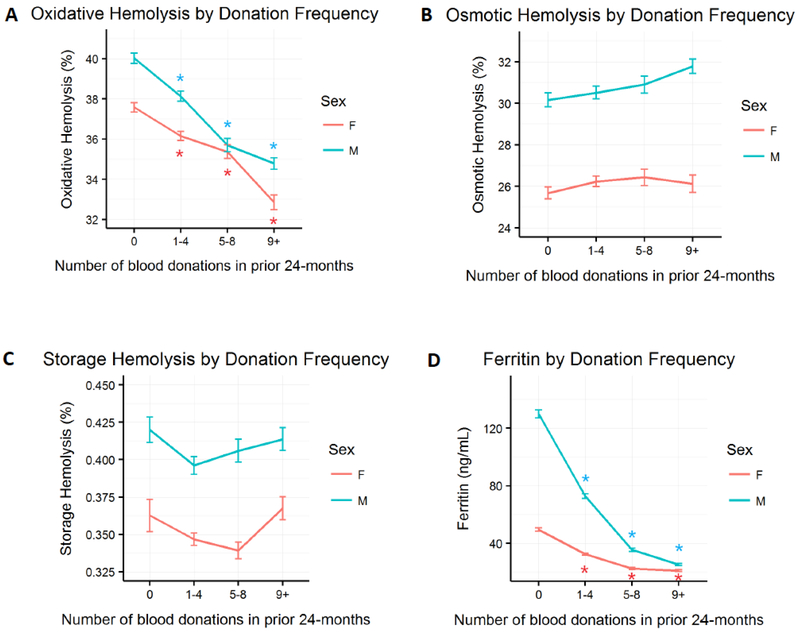Figure 3: Sex distribution of stress-induced hemolysis, storage hemolysis or donor ferritin levels at selected categories of donation frequency in prior 24 months.
RBC concentrates from male or female donors ages 18–90 years old were stored (1–6°C) for 39–42 days in transfer bags and tested for storage or stress-induced hemolysis as described in Materials and Methods. A. Percent AAPH-induced oxidative hemolysis (150mmol/L, 1.5h, 37°C) (n=10,476). B. Percent osmotic hemolysis (n=12,799). C. Percent spontaneous storage hemolysis (n=12,753). D. Donor plasma ferritin (ng/mL) (n=13,323). Error bars represent standard errors of the mean. Asterisks represent statistical significant difference in mean hemolysis or ferritin between first- time/reactivated donors and each of the donation frequency bin for male and female (p < 0.001). Hemolysis measures were normalized for blood center differences in blood component manufacturing procedures.

